Why you can trust Tom's Hardware
Comparison Products
Today, we pit the T7 Touch against a collection of competing 10 Gbps SSDs, as well as a few outliers to show the value in its performance. To start, we include the SanDisk Extreme Pro, LaCie Rugged SSD, Lexar SL100 Pro, and Adata SE800. As a value-oriented 10 Gbps portable SSD, we threw in Crucial’s X8. And with its comparatively pokey SATA interface, we also included the SanDisk Extreme. We also added in the Samsung X5, a thunderbolt 3 SSD, WD’s My Passport and LaCie’s Mobile Drive, both portable HDDs.
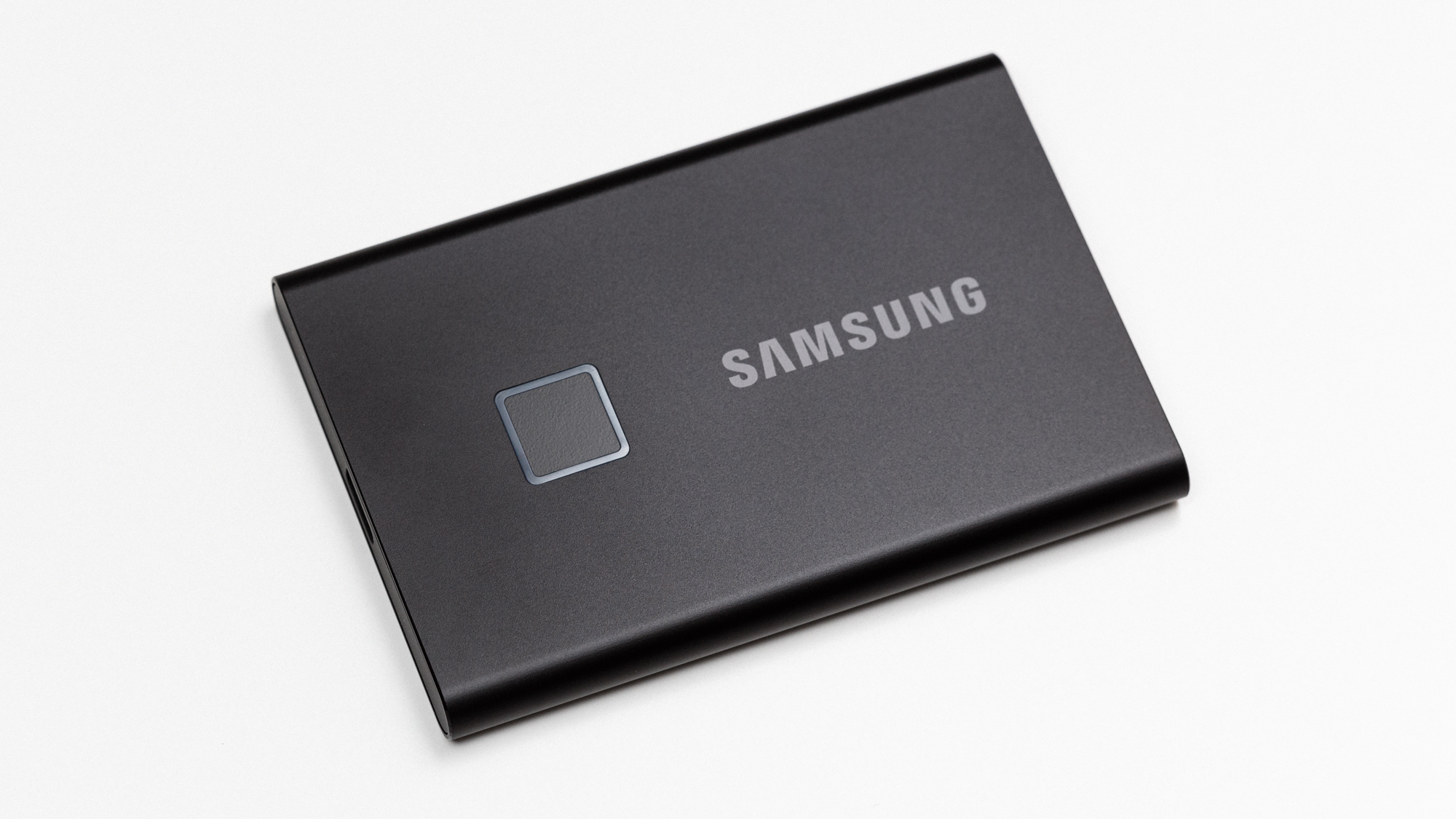
Transfer Rates – DiskBench
DiskBench is a storage benchmarking tool that allows us to test the transfer or copy performance of a storage device with real data. We test external drives with three file transfers that consist of 25GB of photos (10GB of jpgs and 15GB of RAW photos), 50GB of movies, and 25GB of documents. First, we transfer each folder from a 1TB NVMe SSD to the external device; then we follow up by reading a 3.7GB 7-zip file and a 15GB movie back from the device.

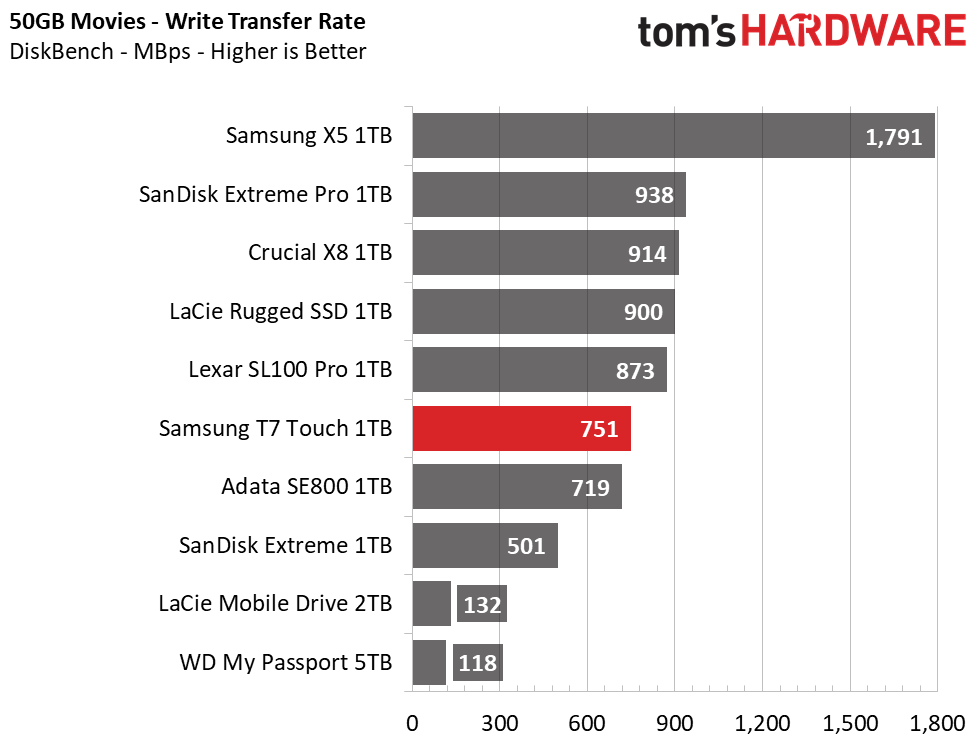
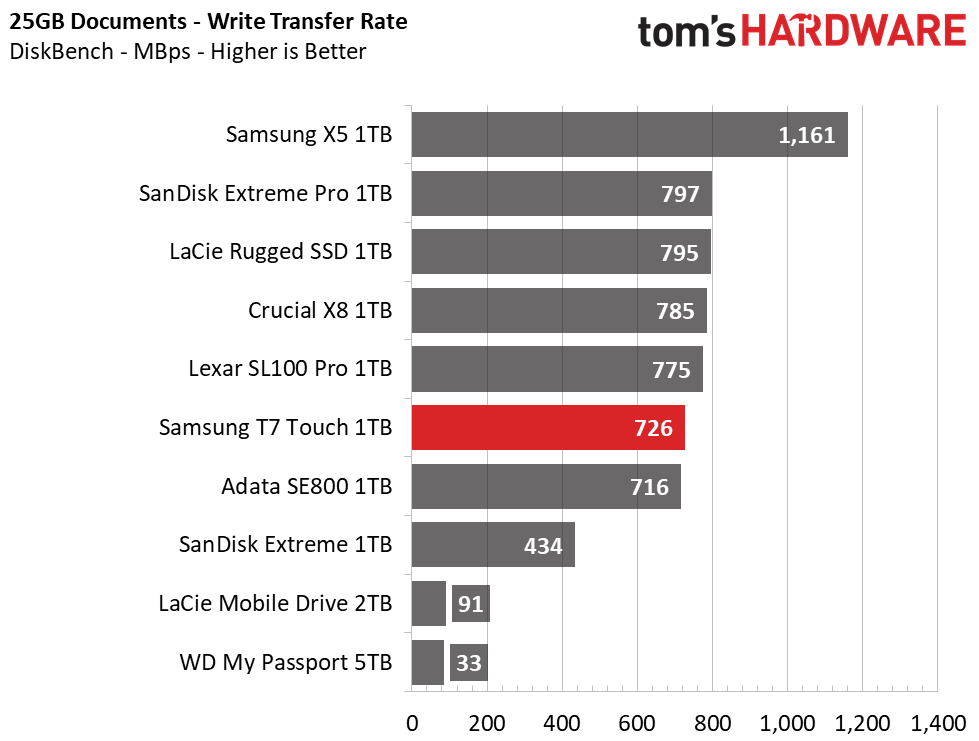
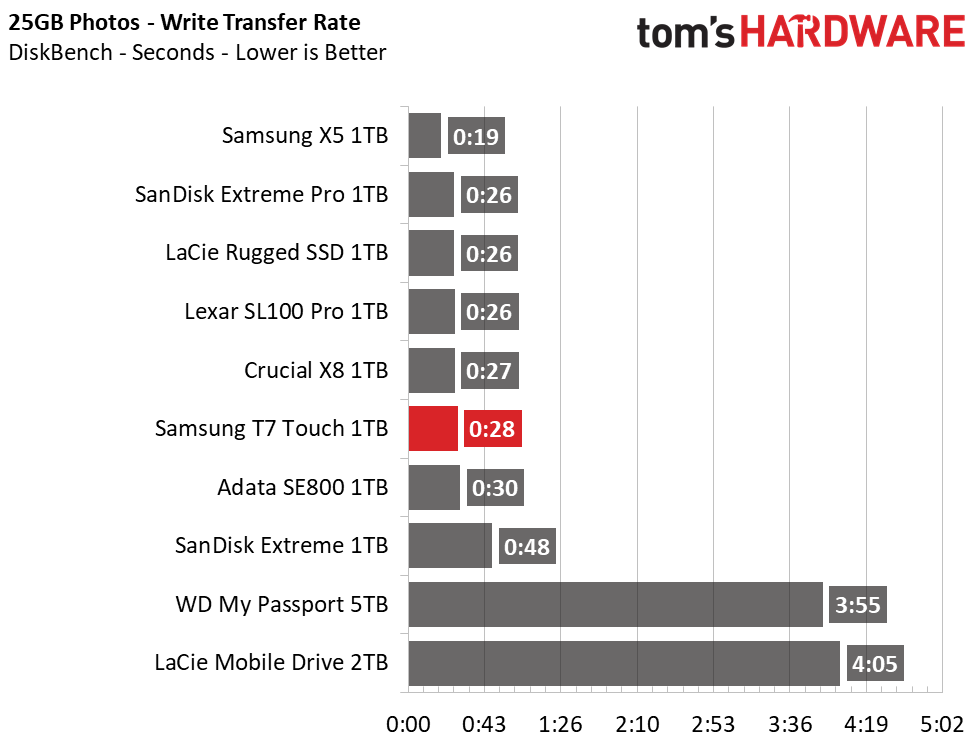
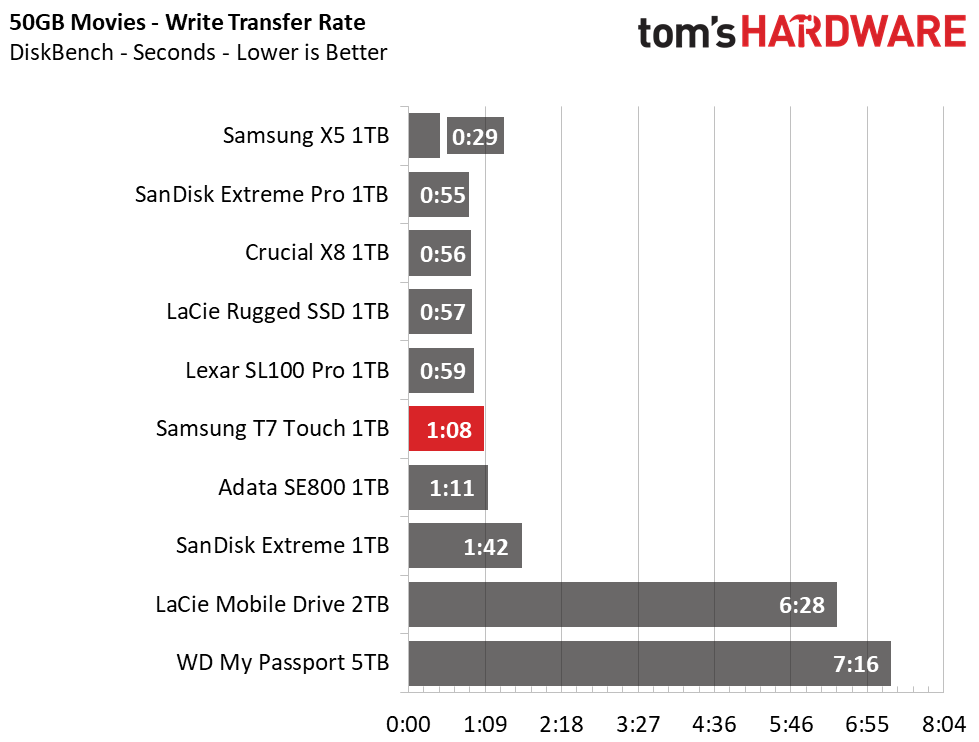
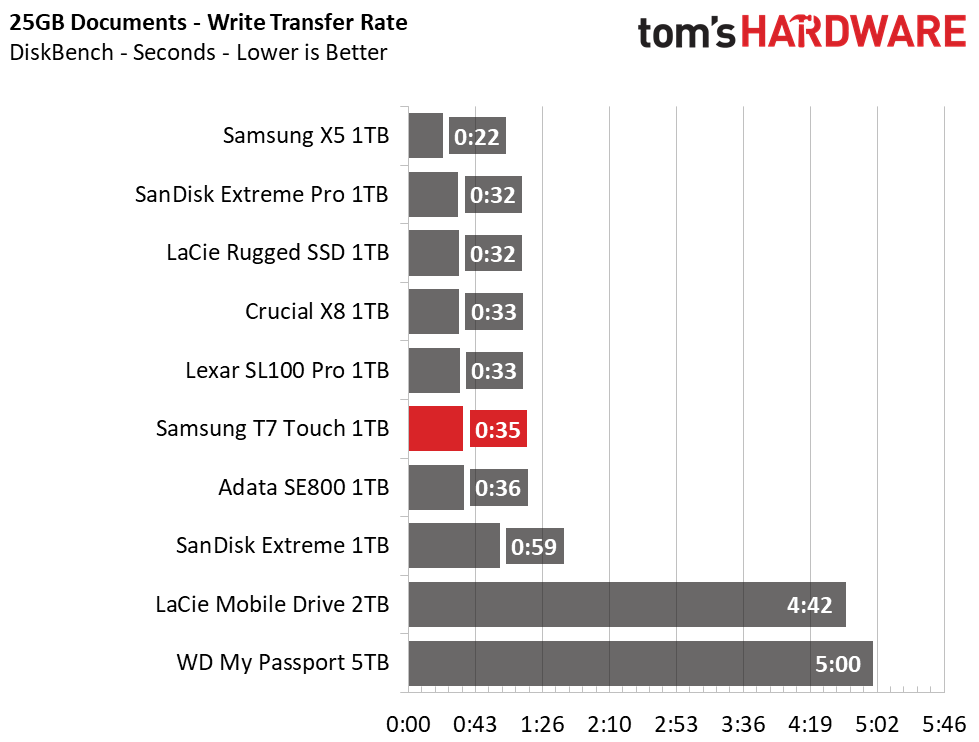
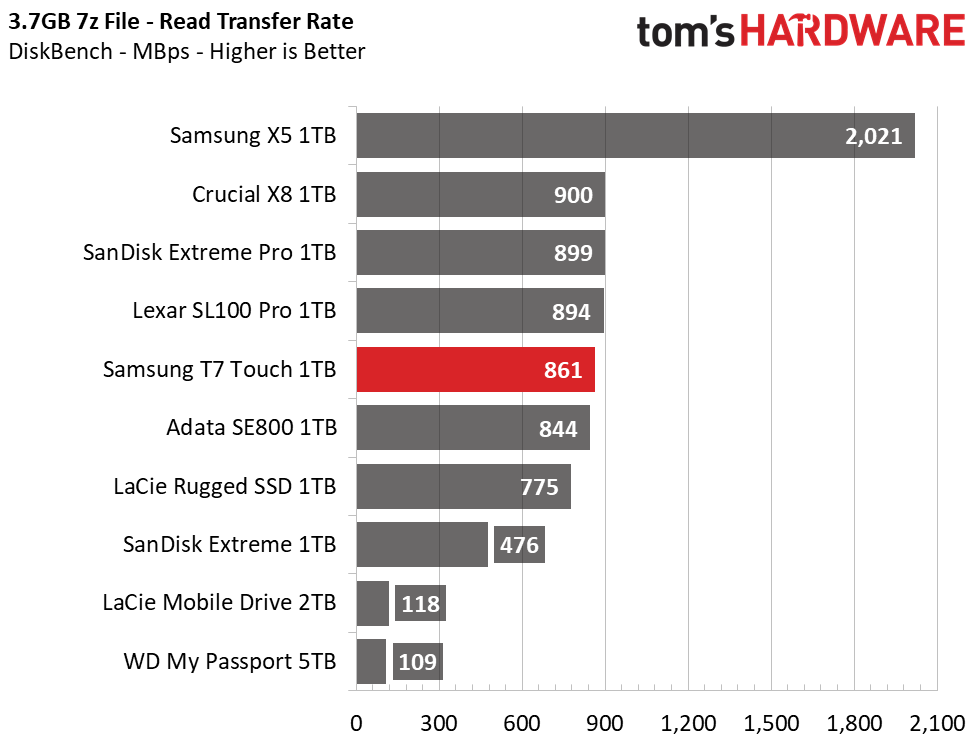
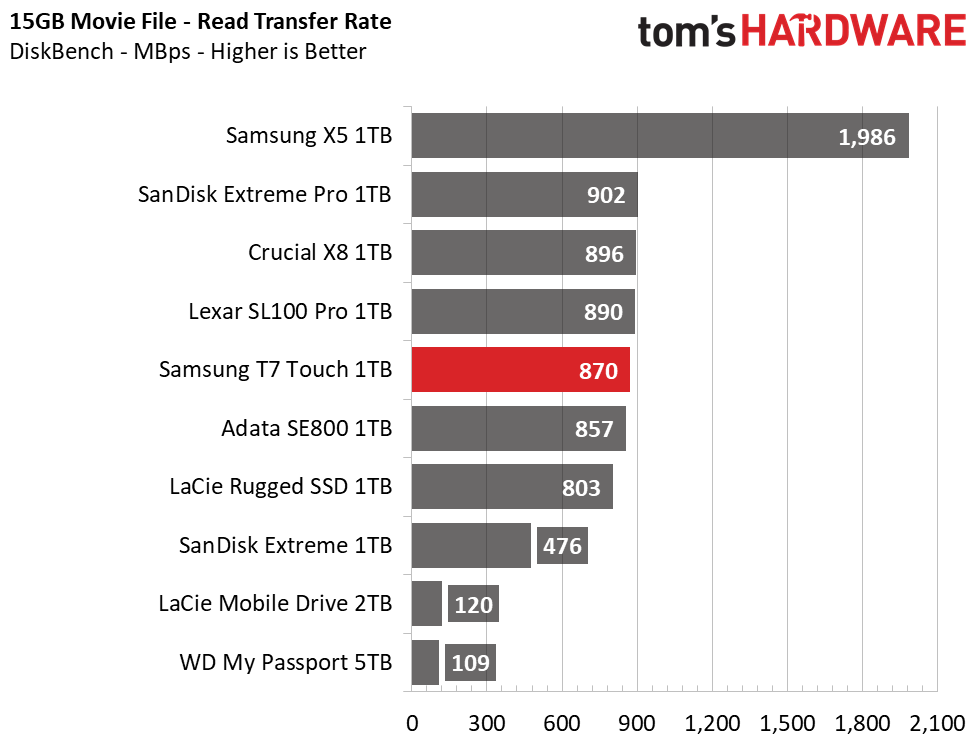
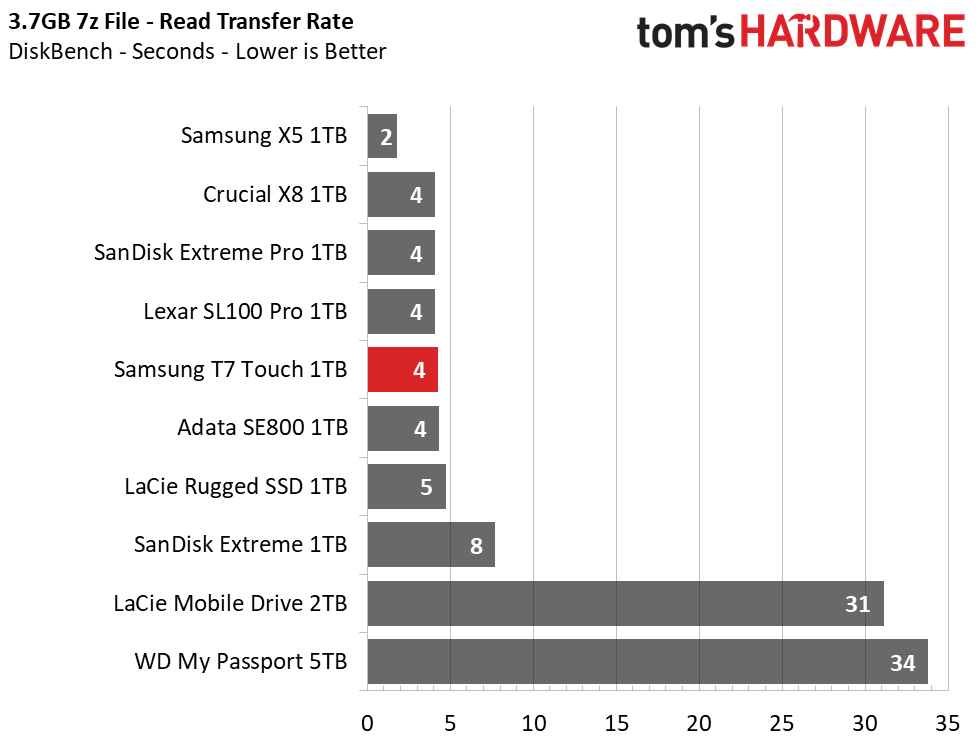

Samsung’s T7 Touch isn’t the fastest 10 Gbps SSD you can get, but when transferring your favorite photos, video, or documents from your system to the T7 Touch, it will provide ample performance. It ranks sixth place during the write transfers and ups that to fifth place during the read tests.
Trace Testing – PCMark 10 Storage Test: Data Drive Benchmark
PCMark 10 is a trace-based benchmark that uses a wide-ranging set of real-world traces from popular applications and common tasks to measure the performance of the storage device. To test drives that store files rather than applications, we utilize the Data Drive Benchmark.
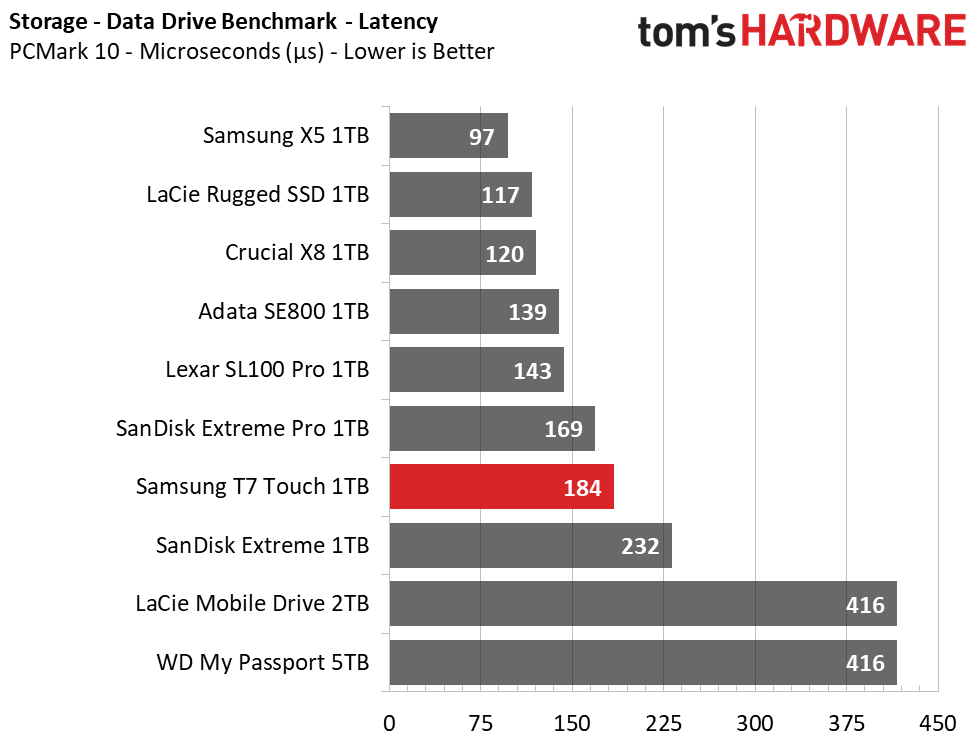

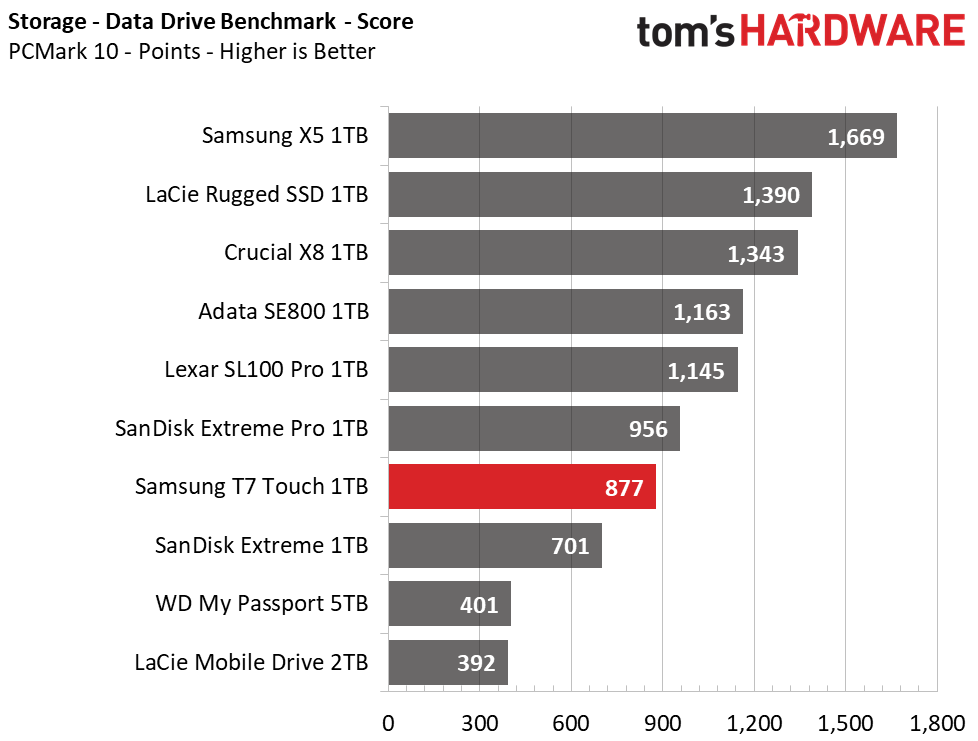
Samsung’s T7 Touch once again falls behind the pack here. In PCMark 10’s Data Drive Benchmark, it ranked in 7th place overall. Every 10 Gbps SSD outperformed it, but the Samsung drive still provides higher performance than the SATA-based SanDisk Extreme, and scored similarly to the Extreme Pro overall. As should be obvious, it delivered much better performance than the HDDs.
Synthetics - ATTO
ATTO is a simple and free application that SSD vendors commonly use to assign sequential performance specifications to their products. It also gives us insight into how the device handles different file sizes.
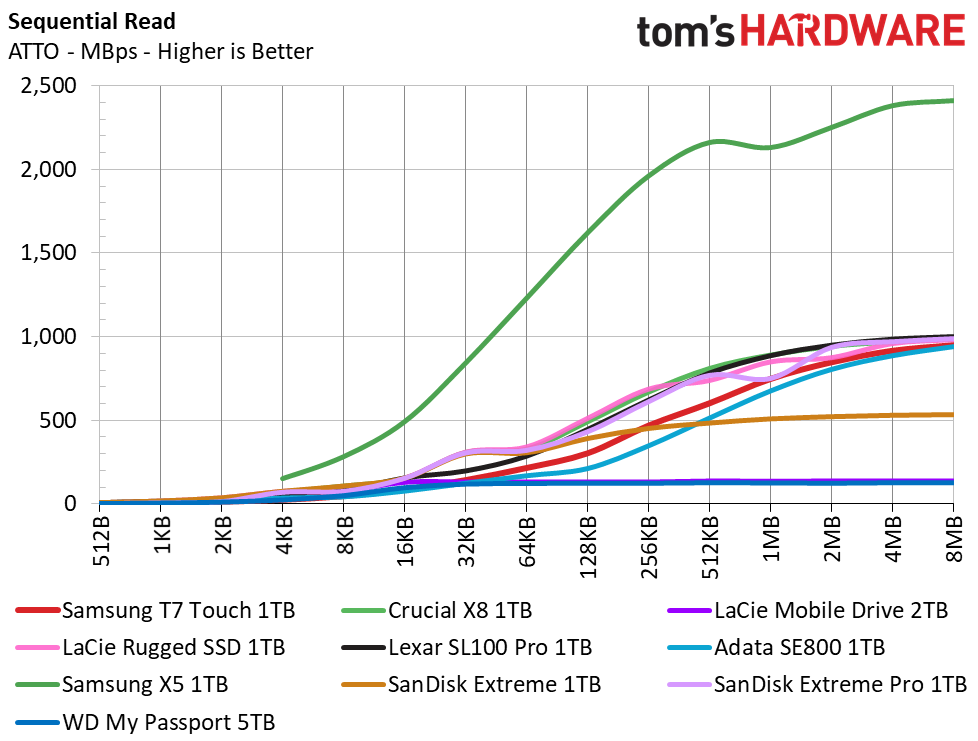
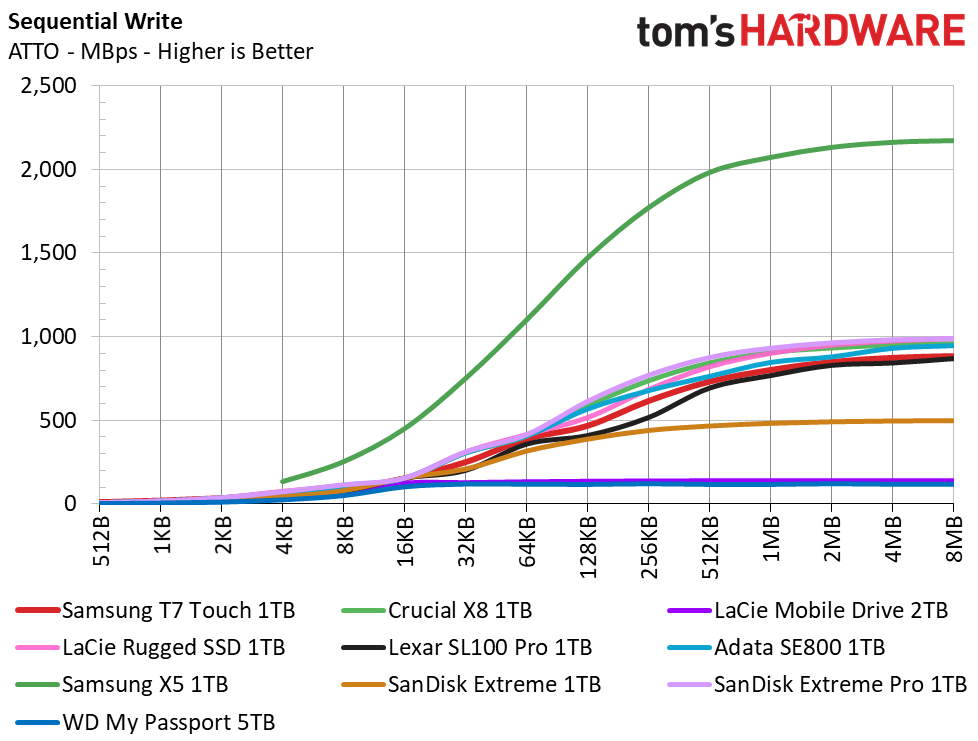
In ATTO, we tested Samsung’s X7 Touch at a QD of 1, representing most day-to-day file access at various block sizes. While it managed to peak at 952 / 884 MBps read/write at the 8MB file size, most of its competition hit higher highs. As well, competing drives seem to provide better performance at smaller block sizes too, which showed in our file transfer results.
Get Tom's Hardware's best news and in-depth reviews, straight to your inbox.
Synthetics - iometer
iometer is an advanced and highly configurable storage benchmarking tool that vendors often use to measure the performance of their devices.
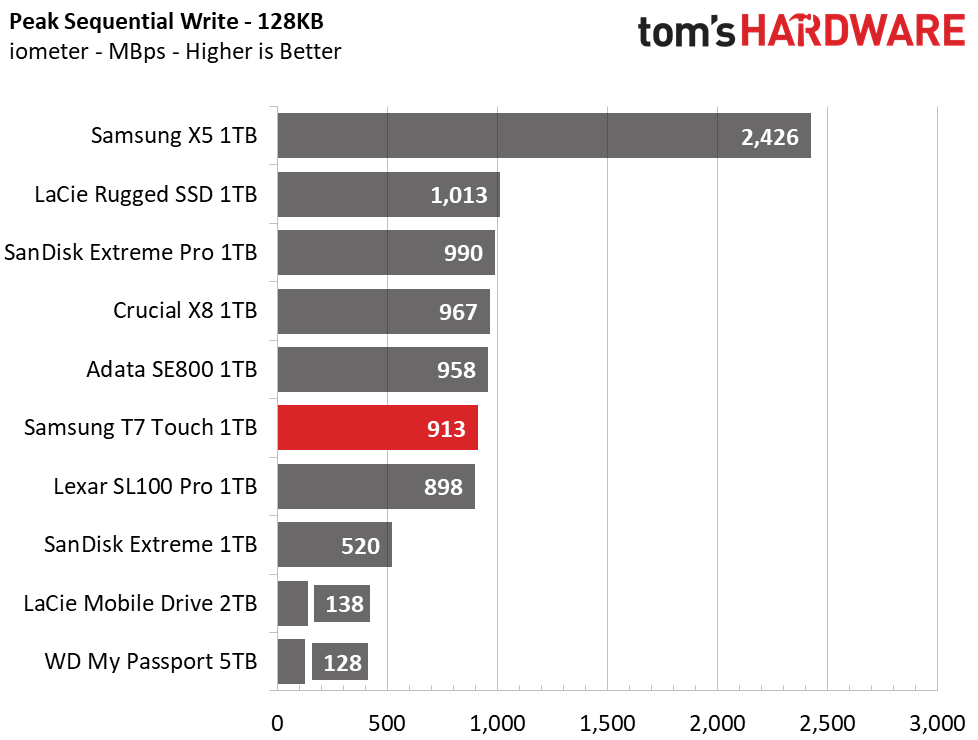
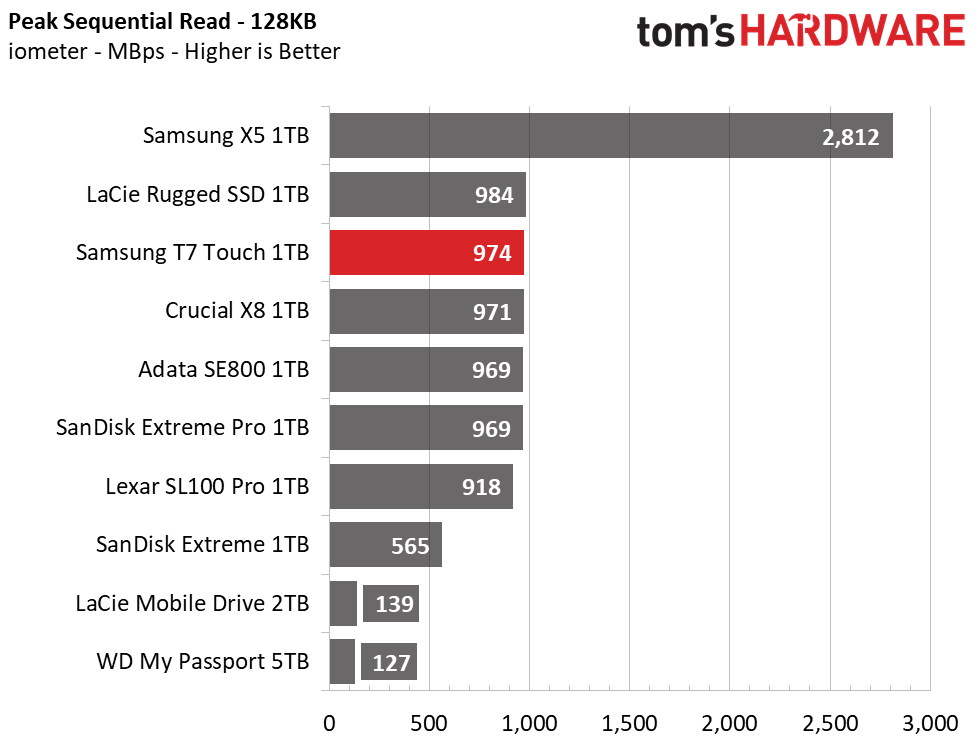

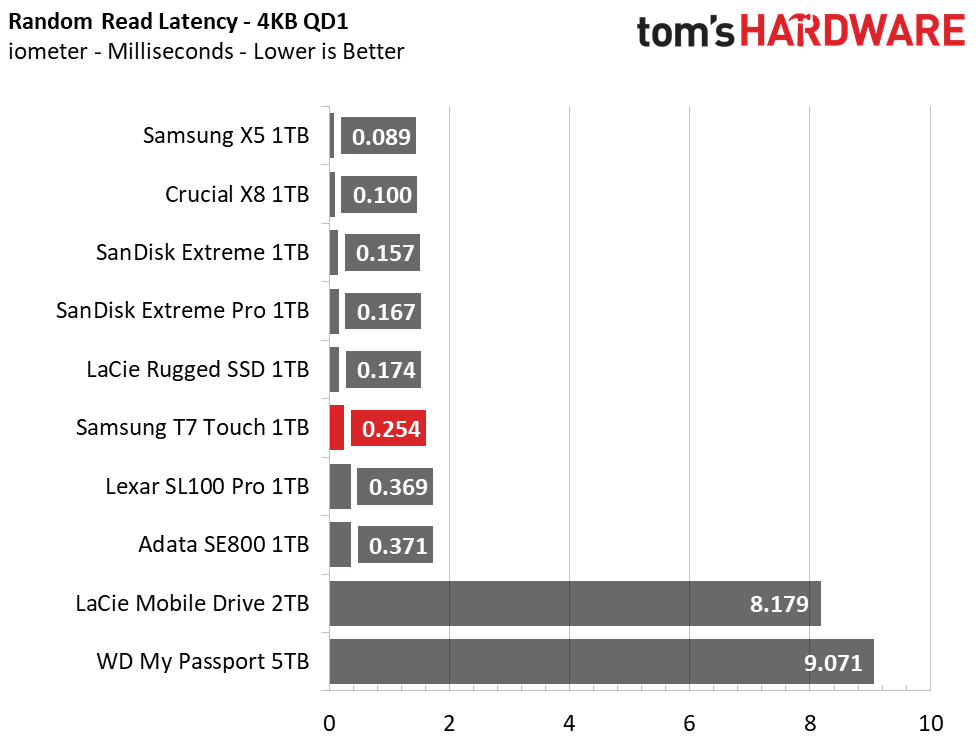


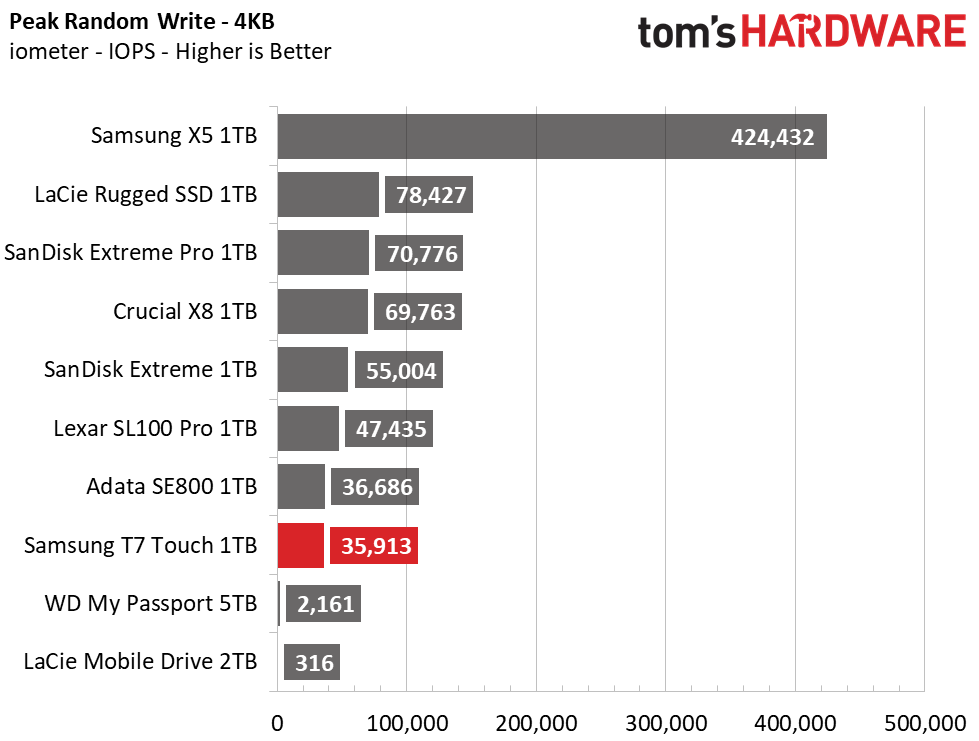

In iometer, Samsung’s T7 Touch managed third place overall in sequential read performance, peaking at 974 MBps. Write performance hit a respectable 913 MBps, but the drive scores sixth place overall. It landed in sixth place under random tests too, trailing most 10 Gbps portable SSDs.
Sustained Write Performance, Cache Recovery, and Temperature
Write speed and temperature are two important and inter-related metrics for external devices. We threw in this one last test to measure the performance of the drive over a 15-minute window, writing to the full span of the drive. This test reveals if the drive has a pseudo-SLC cache, which is a small portion of faster-programmed flash that absorbs incoming write workloads. We also monitor cache recovery via multiple idle rounds.


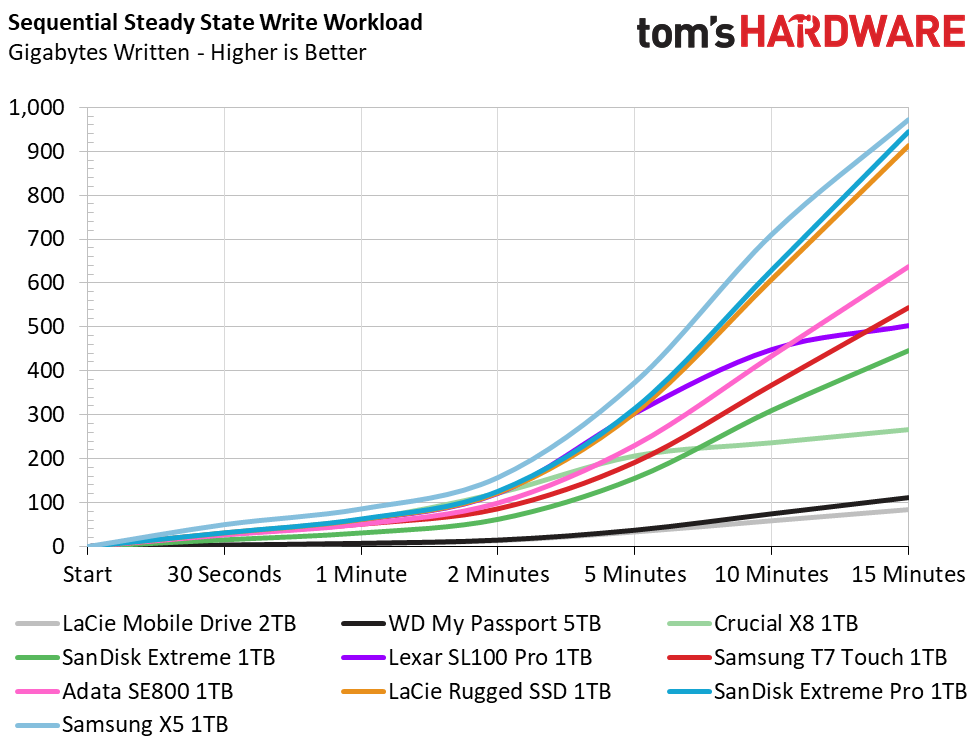
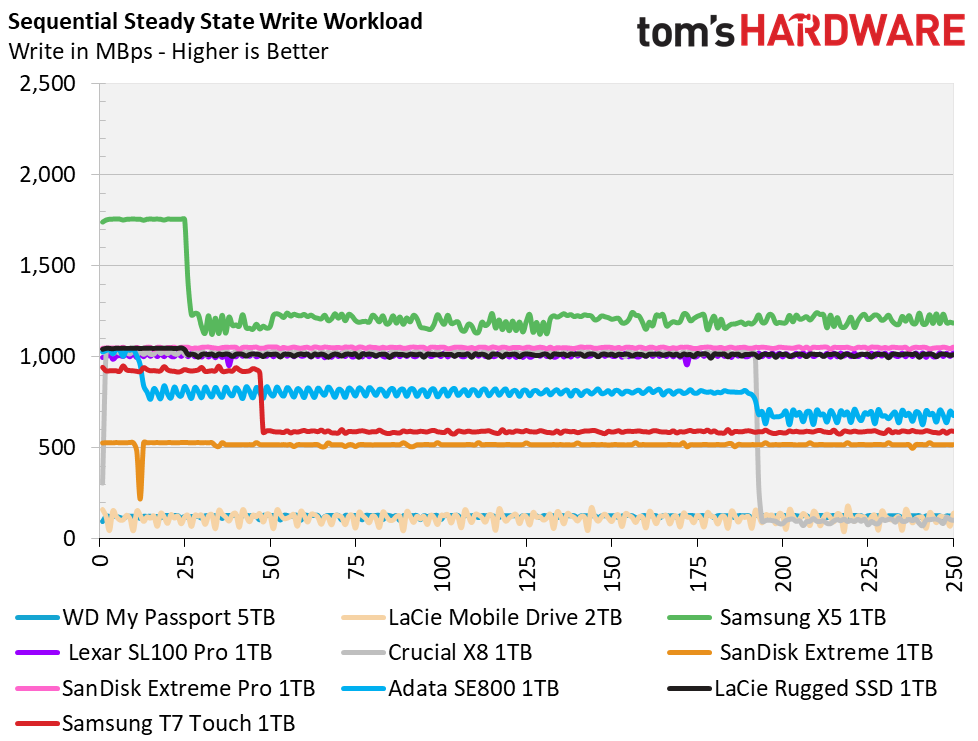
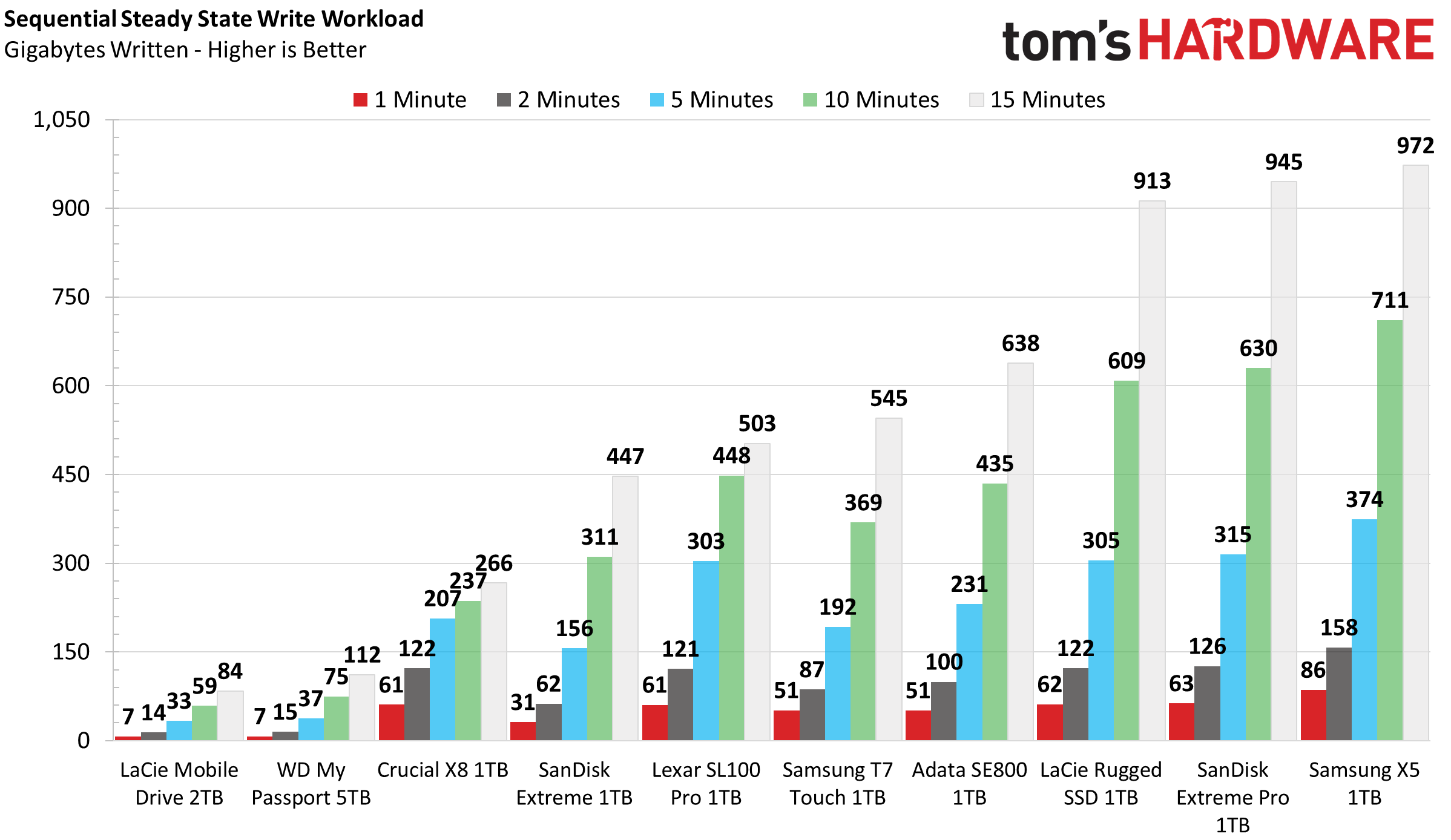
Samsung outfits the T7 Touch with what seems like a 45GB write cache at the 1TB capacity. After writing to the drive continuously at about 930 MBps, it was able to write another 45GB after just 30 seconds idle time. So under average use, it should suffice. But, for those who manage large files daily, the T7 Touch isn’t the best candidate for the job. After the write cache fills, write speeds degrade to about 500-600MBps.
Temperatures weren’t an issue for the T7 Touch either. Samsung rates it to stay below 45C at room temp. When transferring over five hundred gigabytes of data to and from the SSD, its surface temperature managed to stay under 44C with no airflow.
MORE: Best SSDs
MORE: How We Test HDDs And SSDs
MORE: All SSD Content

Sean is a Contributing Editor at Tom’s Hardware US, covering storage hardware.
-
g-unit1111 I like that external SSD manufacturers are including longer cables. That has been a huge complaint of mine is that these drives cost $200+ and they give you 5 cents worth of USB cables.Reply -
michft Pros;Reply
Faster than the T5 for large writes.
Thinner than the T5Cons;
Slower than the T5 for 4k writes (scratch disk work)
Longer than the T5
Cables don't have the 10cent Velcro ties of the T5. Not road warrior friendly.
16 character maximum Master Password
Only AES256, (no custom options). Not FIPS 140-2 rated.
No cut and paste password, thus no password manager passwords. Just try remembering any master password over n years. Which brings me to the next one.
No easy password factory reset, reset requires putting hard to read characters (the PSID) into a hard to get piece of software (Australian Tech Support didn't know it existed)
No Linux support for settings changes.
Overall 2/5 -
Alex Fotios Security may be problematic: https://blog.fotios.org/2020/10/samsung-t7-touch-1tb-external-ssd-drive.htmlReply